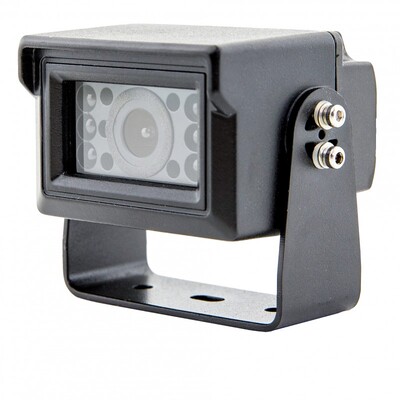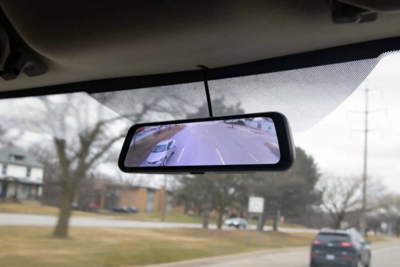BUSINESS
2022 Mobile-Electronics Trends
Hard Hit by COVID, the Industry Bounces Back
By Douglas McColloch

North Hall at the Las Vegas Convention Center was the center of activity for the mobile electronics market at the 2021 SEMA Show. More than 100,000 industry professionals attended the weeklong event last November.
It’s no secret that the electronic age has influenced every segment of the automotive aftermarket—and will continue to do so for as far into the future as we can see. Whether it’s the adoption of computer-aided design and 3-D printing by builders and fabricators or consumers demanding full integration of their cars and their devices, computer-driven electronics are here to stay. The proliferation of advanced driver-assistance systems across OE vehicle platforms and increased vehicle connectivity with the Internet of Things have created enormous technical and logistical challenges for the aftermarket—and boundless opportunities for entrepreneurs looking to establish a brand presence in a rapidly evolving marketplace.
As a whole, the mobile-electronics industry did not fare well during the initial stages of the COVID-19 pandemic. Severely impacted by COVID-related manufacturing disruptions, the industry took a hard hit, with a 5% decline in sales worldwide in 2020, according to Fortune Business Insights. Still, new players enter the market on a near-weekly basis, and the increase in the number of homebound consumers in search of alternative forms of entertainment during the pandemic provided additional opportunities for recovery and growth. As supply-chain issues are resolved over time, the global automotive electronics market is projected to reach $382 billion by 2026, with a 7.3% compound annual growth rate over the 2020–2026 time period, according to a recent study from Allied Global Insights.
For this article, we consulted more than a dozen industry leaders. What follows is a summation of their insights, edited for clarity and length.
The State of the Market: Healthy, With Headwinds

Demand for vehicle safety products continues to remain steady, both from Tier-1 suppliers and the aftermarket. This EchoMaster analog high-density backup camera from AAMP Global offers standard 720p resolution.
Overall, our panel of experts agreed that the market has returned to a relatively normal condition, though challenges loom for the near future.
“Challenging, ever-changing and rewarding,” said Darryl Miya, brand manager for Scosche Industries. Miya cited inflation, the end of stimulus funding and further COVID disruptions to the supply chain as near-term concerns, adding that “hopefully things will start to smooth out by the third quarter.”
“The supply chain is what’s hurting most companies, and now it’s twice as difficult because of the increase in consumer demand,” said Dennis Hopper, executive vice president at VAIS Technology. “COVID shut down workplaces, and people had extra money to spend. That helped feed the extra demand.”
Recent geopolitical unrest is also likely to weigh on the industry for the near term.
“We’re a global economy now, so when something happens such as what’s going on in Ukraine, it can send everything into a tailspin,” said Robin McNeal, national sales manager for Nakamichi Car Audio. “For us, Russia is a huge customer, and I suspect that side of the business may soon come to a grinding halt.”
Still, some companies have managed to weather the storm with continued strong sales.
“Business the last two years has been very strong, with unprecedented growth,” said Brian Sherman, vice president of product and marketing for Maxxsonics USA. “We feel that it’s starting to level off, but we still see certain opportunities for growth.”
Major Trends and Developments

Vehicle owners looking to upgrade their vehicles to include blind-spot monitoring have options available via the aftermarket. This Brandmotion radar-based RDBS camera system includes cross-traffic detection.
The mobile-electronics industry serves a number of diverse customer bases. Not surprisingly, our panel of experts saw growth in different markets.
“A lot of the manufacturers on the mobile side have been turning their attention to the marine and powersports markets,” Hopper said. “It seems like just about everyone has product now for side-by-sides. Motorcycle audio has been steady for a few years, and while car audio still exists, the new niche segments such as powersports have been growing the most rapidly.”
McNeal also cited the marine market as a strong sales driver: “That’s an up-and-coming market for us.”
Marine electronics alone comprise a $5.25 global market, according to a recent survey from Maximize Market Research Ltd.
“And don’t forget golf carts and three wheelers,” Hopper continued. “Across the country, you have a lot of gated communities where people drive them all over the place, and some of them have massive audio systems in them.”
McNeal saw strong consumer demand for software installations.
“It’s all about Apple Car Play and Android Auto—and, of course, those are the two biggest users of the microchips that everyone’s struggling to get,” he said. “Now, unless you’re just looking to fill a hole in your dash, that’s what everyone is after. With the cost of new and used vehicles so high, people are holding onto their vehicles longer, and eventually they’ll want to bring that new technology into the current vehicle.”
Sherman pointed to the powersports market as a rapidly expanding sector, and to increasing consumer interest in high-powered, high-end mobile audio systems. But Sherman and McNeal both pointed to a shortage of skilled labor as an issue that has forced the market to adapt.
“The complexity of new vehicles and access to a pool of qualified installers has certainly presented challenges,” Sherman said. “We’ve responded by developing products that are easier to install for people with even basic mechanical knowledge. Products like our MB Quart Jeep audio kits are just one example.”
The pandemic and its related disruptions forced many companies to ramp up their investments in digital marketing and social media, in particular.
“We’ve always been very pro-digital,” Hopper said. “We have a very active Facebook page with a lot of users, and we do our own email blasts based off information we capture from dealers that buy from us. Add Google SEO, and that would be the top three digital marketing platforms for us.”
Sherman said that social media is a key part of his company’s marketing strategy.
“It still represents the most cost-effective and efficient way to get info on new products out to our distributors, dealers and consumers,” he said.
A mobile-friendly website that’s capable of conducting transactions is an increasingly important tool in the digital toolbox as well.
“Purchases made from smartphones increase each year,” Miya noted.
Challenges and Opportunities

App-based connectivity is another fast-growing mobile electronics segment. Voyo’s Scan Pro diagnostic scan tool can monitor a car’s activity in real time and forward the information to the owner’s mechanic.
Most of our experts agreed that the overall economy and consumer demand were likely to slow down later in the year. Citing unstable geopolitical issues, Hopper felt that the market “might get a little wavy” in the near term, though supply-chain problems may gradually resolve themselves by the third quarter of 2022.
Advances in OE electronics systems will also pose challenges to certain elements of the market.
“The radio segment of the 12-volt category will suffer because the OE manufacturers are really pushing to put bigger screens in cars,” Hopper said. “You have to integrate a lot more of the car into that bigger screen, so I think you’re going to see more dealers on the aftermarket side say, ‘Let’s just leave the head unit alone, go with DSP, and put the emphasis on better amps and better speakers.’”
McNeal also mentioned rising fuel prices as a near-term concern.
“When the price at the pump goes up, it has never been kind to our industry,” he said.
Still, opportunities abound, particularly among newer OE platforms that appeal to enthusiasts and modifiers.
“The expansion of enthusiast-owned vehicles presents a great deal of opportunity,” Sherman said. “Newer platforms like the Bronco, along with existing platforms from Jeep, will create a lot of opportunity for audio upgrades to customers who will readily embrace the chance to improve their vehicles.” On the other hand, “significant challenges remain on the supply chain and logistics side, with freight costs at an all-time high.”
Miya additionally pointed to the growth in used-vehicle sales as an opportunity for the aftermarket as consumers look to retrofit and/or upgrade their vehicles’ factory electronics packages.
“I don’t think we’ll see big growth this year, but as we get into 2023, I think we’ll see business returning to pre-COVID levels,” Hopper concluded.






